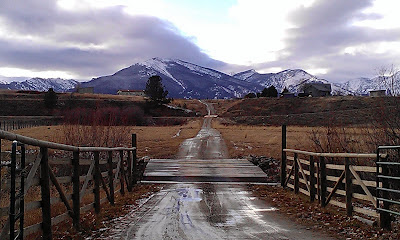A few days ago, an unusual bird showed up in my backyard. I could tell immediately from its size, shape, and plumage that it was a small finch. Overall, it was a fairly plain bird, with plenty of brown stripes and a noticeable white wing bars, not far different from a Pine Siskin. But, whenever the bird turned its head in my direction, it revealed a bright, slightly iridescent red patch just above its eyes. It could only be one thing: a Common Redpoll!
The name is a bit of a misnomer. Sure, if you live in a mountain valley in Alaska or northern Canada, you might see Redpolls as frequently as Chipping Sparrows. But in Montana, these birds only show up sporadically in the winter. A member of the "winter finch" clan, the Cornell Lab of Ornithology describes Common Redpolls as "erratic" migrators, sometimes ending up in places as unusual Arkansas or New Jersey. In irruption years (which this year is certainly shaping up to be), Common Redpolls, along with a variety of other finches and sparrows (and birds of prey - who can forget last year's Snowy Owl surprise?!) move far south of what would be considered their typical range, driven by a scarcity of food.
Year-round, redpolls are incredibly social birds, sometimes found in flocks of 300 individuals. Even during breeding season, it is not uncommon for multiple pairs of redpolls to nest fairly close together and show a lack of territoriality. Redpolls feed almost exclusively on seeds, and hence, are likely to show up where there is a bird feeder. To increase your chances of attracting a redpoll to your backyard, tempt these birds with thistle or nyjer seeds.
Have you seen a Common Redpoll or any other surprising visitors this winter? Be sure to let us know if you do!
The name is a bit of a misnomer. Sure, if you live in a mountain valley in Alaska or northern Canada, you might see Redpolls as frequently as Chipping Sparrows. But in Montana, these birds only show up sporadically in the winter. A member of the "winter finch" clan, the Cornell Lab of Ornithology describes Common Redpolls as "erratic" migrators, sometimes ending up in places as unusual Arkansas or New Jersey. In irruption years (which this year is certainly shaping up to be), Common Redpolls, along with a variety of other finches and sparrows (and birds of prey - who can forget last year's Snowy Owl surprise?!) move far south of what would be considered their typical range, driven by a scarcity of food.
 |
| A Common Redpoll in winter plumage. |
Year-round, redpolls are incredibly social birds, sometimes found in flocks of 300 individuals. Even during breeding season, it is not uncommon for multiple pairs of redpolls to nest fairly close together and show a lack of territoriality. Redpolls feed almost exclusively on seeds, and hence, are likely to show up where there is a bird feeder. To increase your chances of attracting a redpoll to your backyard, tempt these birds with thistle or nyjer seeds.
Have you seen a Common Redpoll or any other surprising visitors this winter? Be sure to let us know if you do!


















































